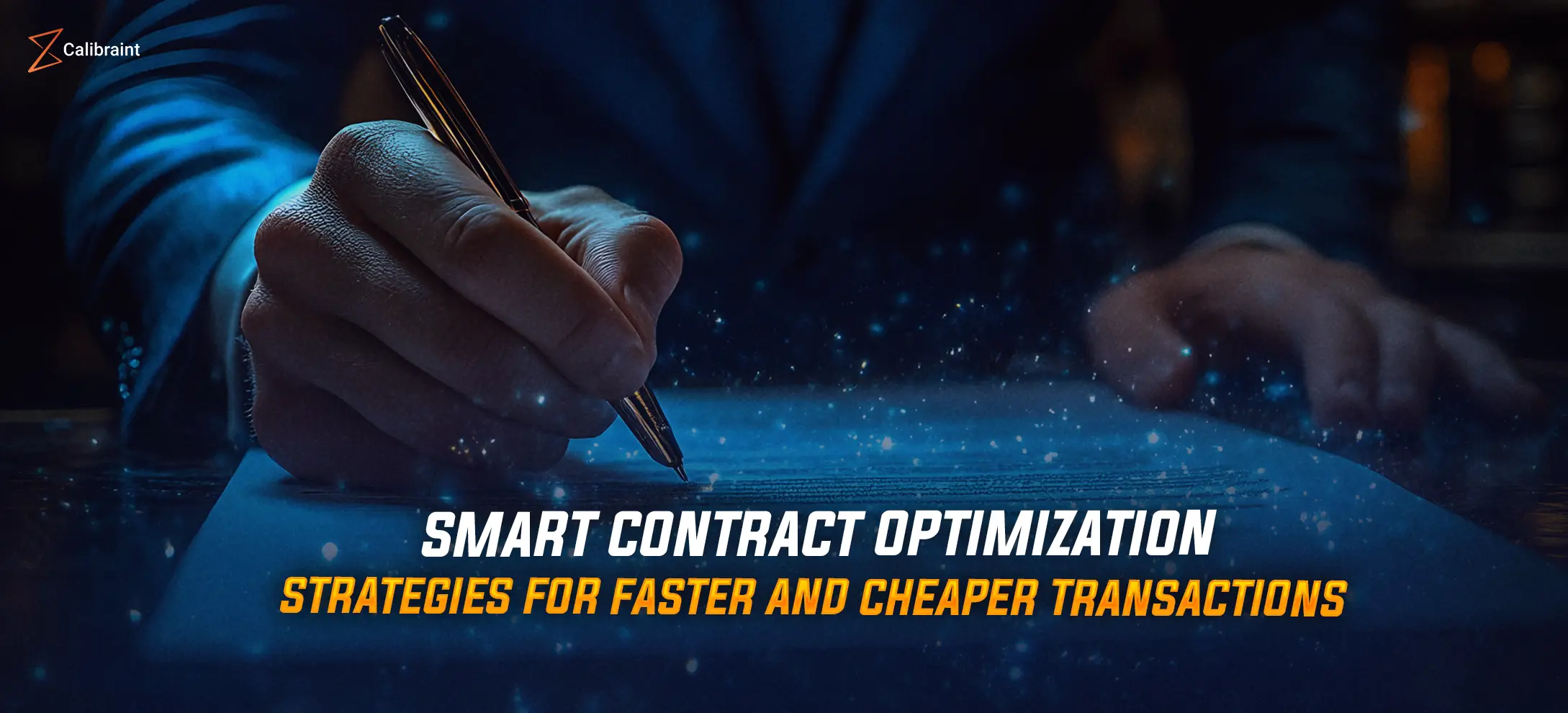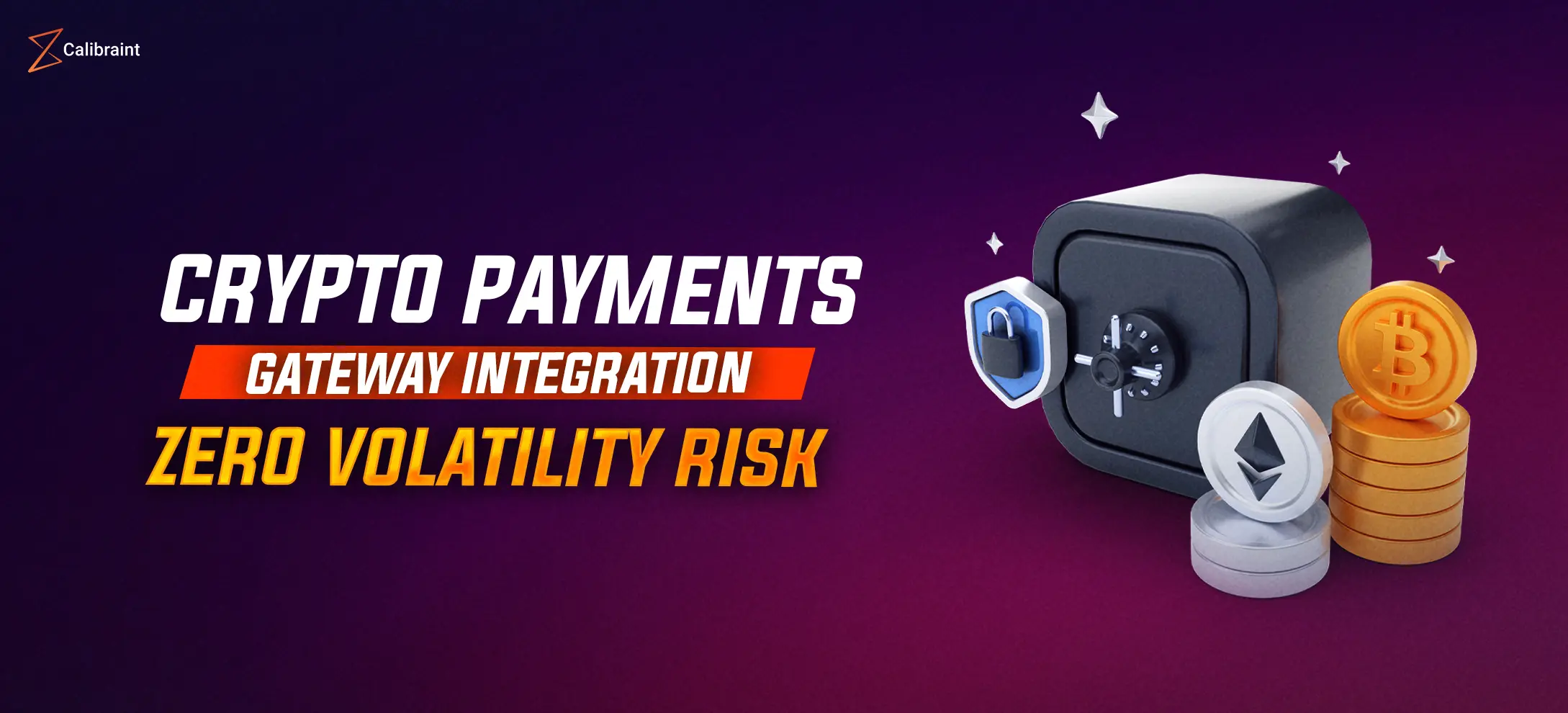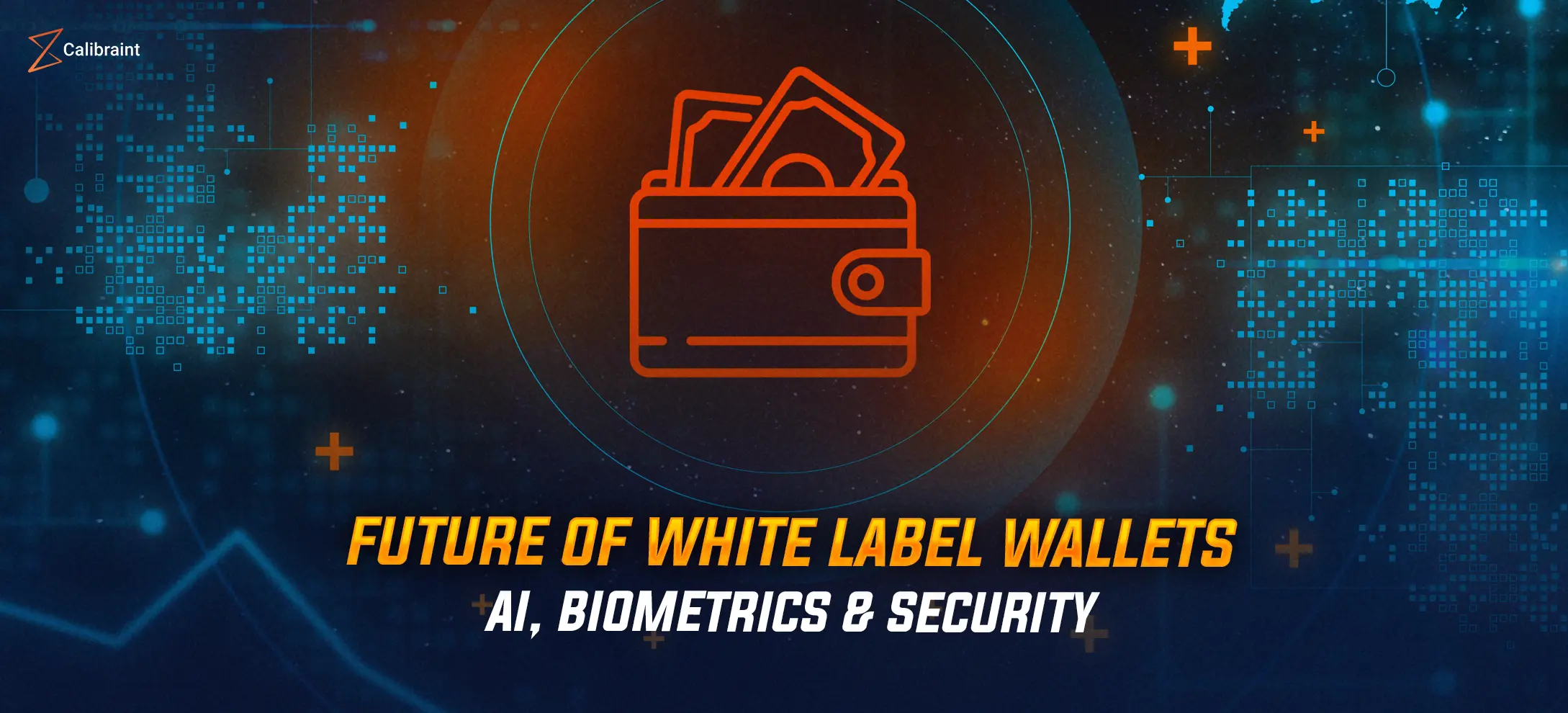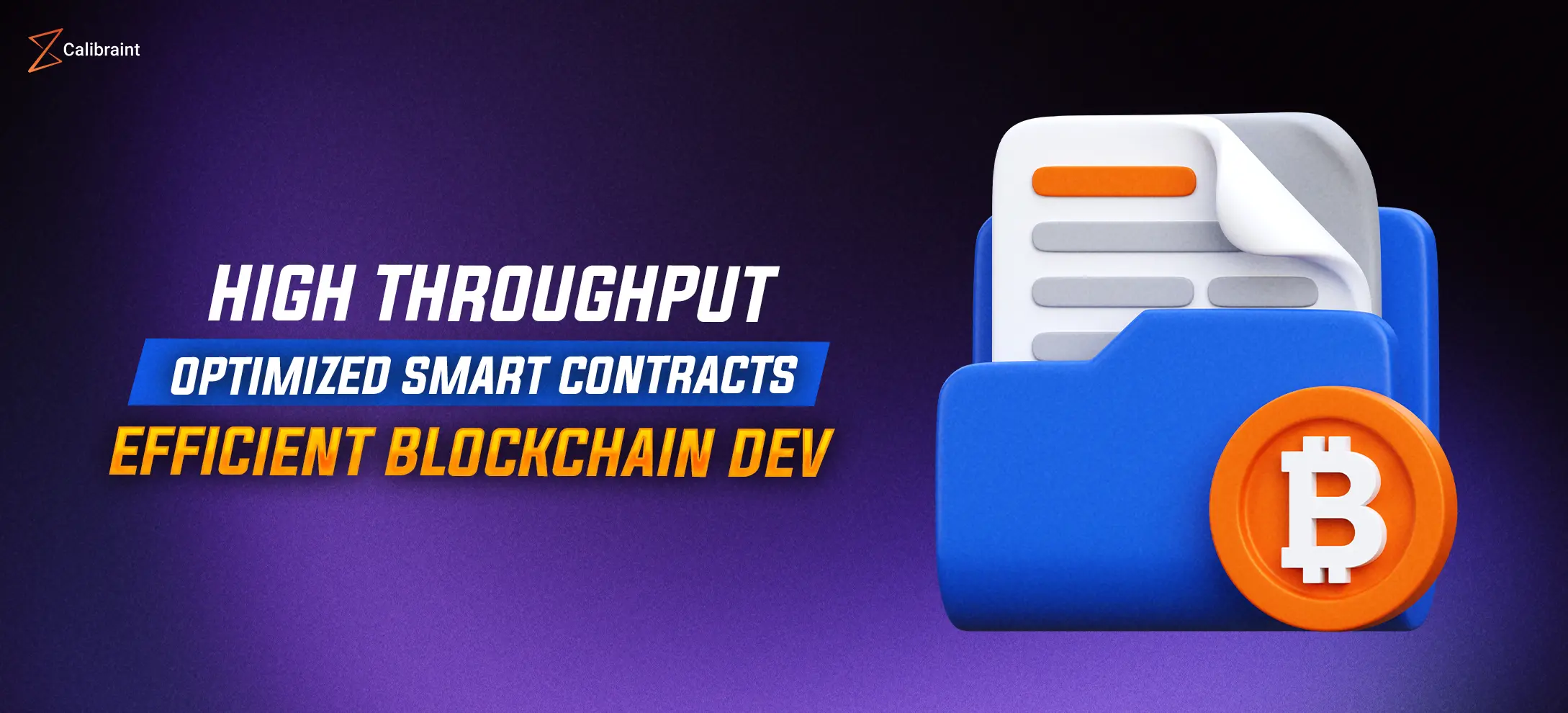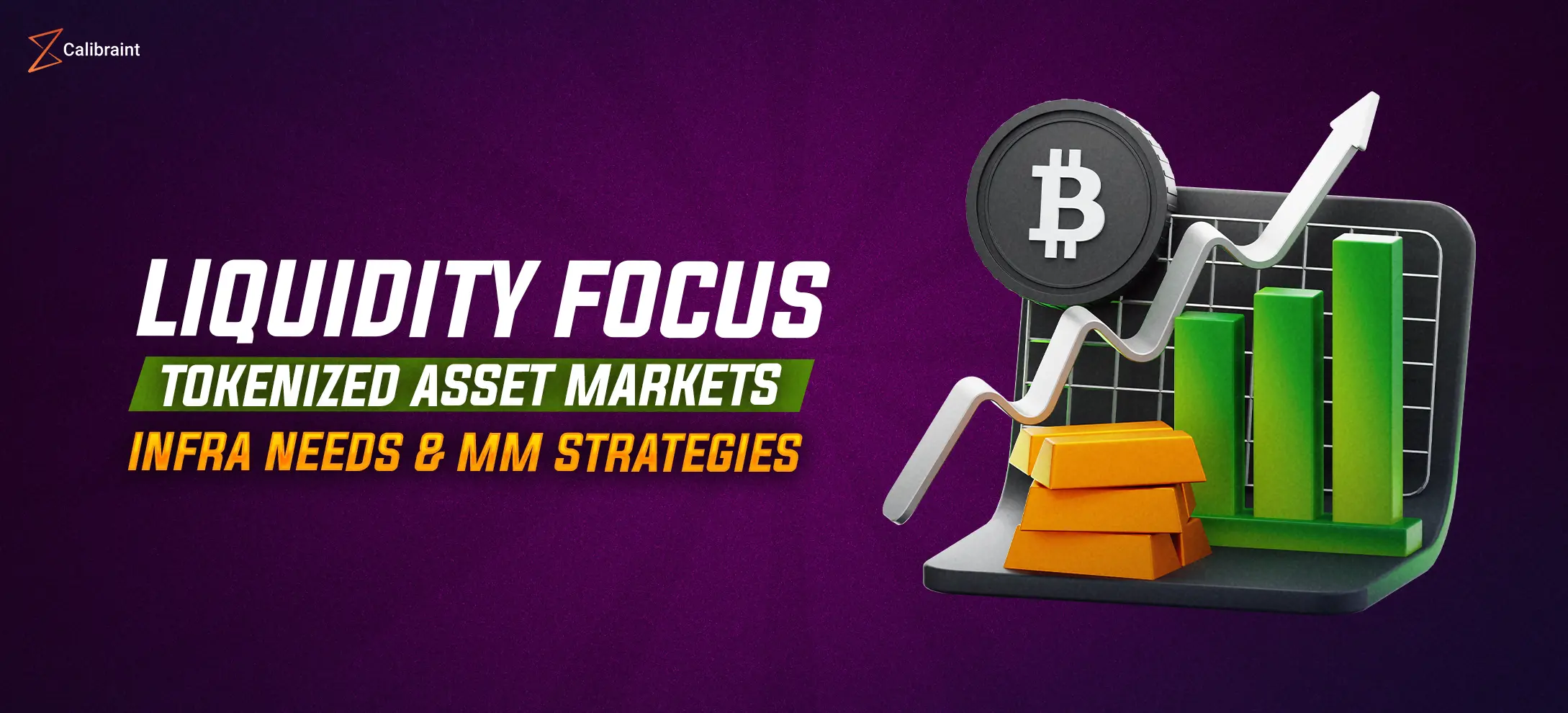Crafting Biometric Crypto Wallet Development for Secure Asset Management
Calibraint
Author
October 28, 2025
Last updated: November 14, 2025
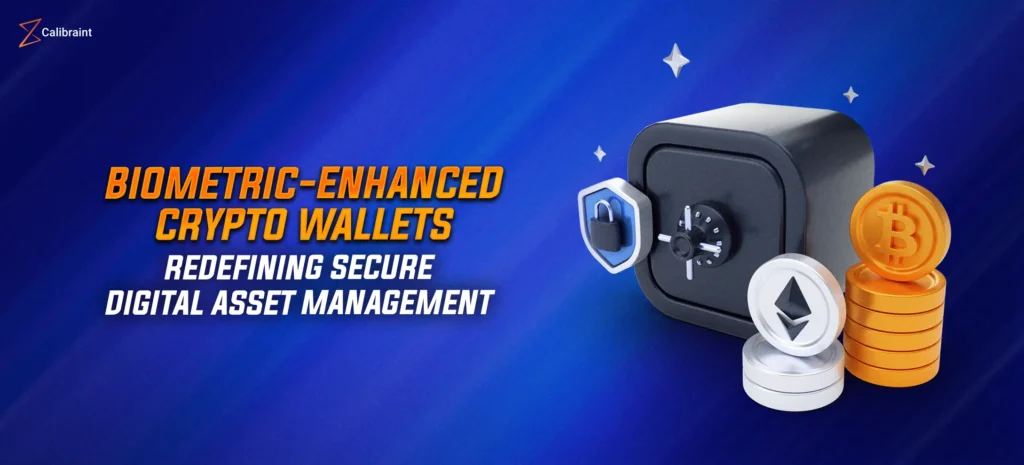
Recently, several groups have argued over which cryptocurrency wallet can be considered the “official” one for a presidential brand. Even members of the same family publicly disagreed. This situation reveals a simple truth: a famous name or logo does not make a secure crypto wallet trustworthy if the wrong person can access it. What truly matters is who has control over the wallet, not whose name appears on it.
This is why biometric crypto wallet development is becoming increasingly important. It combines blockchain security with something that cannot be copied: your fingerprint, face, or voice. This is more than just adding a fingerprint option to an existing wallet. It represents a new approach to proving ownership and control of digital assets in 2025 and beyond.
Why Passwords Fail in Crypto Asset Management
A password can be guessed, phished, or purchased on dark web forums for $10. Security questions are trivial to research through social media. Even hardware tokens can be stolen or duplicated. The problem intensifies with cryptocurrency because blockchain transactions are irreversible. Once assets move, they’re gone.
Traditional authentication methods assume you can reset access if something goes wrong. Crypto operates differently. Your private key is your money. Lose it, and no customer service department can help. This permanence demands authentication that can’t be forgotten, stolen, or transferred.
Biometric authentication solves this by tying access to something inherent to you, patterns in your iris, the ridges on your fingertips, or the geometry of your face. These can’t be left on a Post-it note or extracted through a phishing email.
Technical Architecture: Where Biology Meets Blockchain
Building a biometric crypto wallet in 2025 requires three security layers working together seamlessly.
Layer 1: Biometric Capture and Verification
When you place your finger on a scanner or look at a camera, the sensors record unique biological data. Unlike centralized systems, your raw data is never sent out of your device in raw form. Instead, it is immediately converted into a mathematical template, a string of numbers representing the unique features of your biometric sample.
Layer 2: Cryptographic Key Management
Next comes the vault. The biometric template does not become the private key itself; it simply unlocks access to it. This separation is critical because biometric scans can vary slightly, but cryptographic keys must be exact. The system uses your biometric data to decrypt your private key, ensuring precision without exposing your identity.
Layer 3: Blockchain Interaction
Once authenticated, the wallet signs transactions using your private key, broadcasts them to the blockchain, and monitors confirmations. This layer operates independently of the biometric system, preserving the standard security properties of blockchain technology.
In short, biometric crypto wallet development ensures that ownership of digital assets is tied to a person’s unique identity, without compromising blockchain security.
Precision vs. Practicality in Biometric Methods
Each biometric method offers unique strengths and trade-offs that shape biometric crypto wallet development.
Fingerprint Recognition
Fingerprint sensors identify the unique ridge patterns on your fingertips. Modern optical and capacitive sensors have false acceptance rates under 0.001 percent, indicating fewer than one in 100,000 unauthorized attempts are accepted and succeed.
This method is fast, familiar, and fits easily into both mobile and hardware wallets. Most users already trust fingerprint unlocking on their smartphones.
However, it has practical limitations. Cuts, burns, or worn skin can interfere with recognition. Dry or wet fingers may also cause errors. For users in hands-intensive jobs like construction or healthcare, reliability can become inconsistent.
Facial Recognition
Fingerprint sensors identify the unique ridge patterns on your fingertips. Modern optical and capacitive sensors achieve false acceptance rates below 0.001 percent, meaning fewer than one in 100,000 unauthorized attempts succeed.
This method is fast, familiar, and fits easily into both mobile and hardware wallets. Most users already trust fingerprint unlocking on their smartphones.
However, it has practical limitations. Cuts, burns, or worn skin can interfere with recognition. Dry or wet fingers may also cause errors. For users in hands-intensive jobs like construction or healthcare, reliability can become inconsistent.
Iris Scanning
Iris recognition analyzes the complex patterns in the colored ring around your pupil. These patterns contain approximately 250 distinct characteristics, compared to 40-60 for fingerprints. This translates to exceptional accuracy, with false acceptance rates as low as one in 1.2 million.
The iris remains stable throughout life and is unaffected by skin or facial conditions. For high-value asset management where security outweighs convenience, iris scanning offers the strongest authentication.
The drawback is accessibility. Dedicated iris scanners add cost and aren’t standard in most consumer devices. Users must position their eyes precisely within scanning range. For frequent daily transactions, this becomes cumbersome compared to quick fingerprint taps.
Development Process: From Concept to Deployment
Creating biometric crypto wallet development solutions requires methodical attention to security at every phase.
1. Architecture Design Phase
Begin by mapping threat models specific to your user base. An enterprise client managing treasury assets faces different risks than an individual investor. Determine which biometric modality matches the security requirements and user environment.
Design the key management architecture. Will biometric authentication decrypt a locally stored private key, or will it authorize retrieval from a distributed threshold signature scheme? The former offers speed; the latter provides recovery options if a device is destroyed.
Establish data flow boundaries. Biometric data must never be transmitted to external servers, stored in cloud backups, or logged in analytics systems. Even encrypted transmission creates attack surfaces. The rule is simple: biometric data stays on the secure element of the user’s device.
2. Implementation
Start by integrating the right biometric APIs for your platform. iOS uses Secure Enclave, Android provides BiometricPrompt, and custom hardware wallets connect directly to sensor SDKs.
The secure enclave handles sensitive operations and releases encrypted keys only after confirming the user’s biometric identity. To prevent spoofing, advanced wallets include liveness detection, checking for real biological signs rather than static reproductions.
3. Testing
Testing goes beyond standard QA. Conduct penetration tests focused on the biometric flow. Can attackers bypass authentication or manipulate sensors? Simulate failures such as sensor errors, device compromise, or rooted devices.
Ensure the wallet denies access in these cases rather than weakening security. Test accuracy across diverse users to ensure equitable access for everyone.
4. Deployment
Provide recovery mechanisms that maintain security, such as encrypted key shards or multi-signature setups combining biometrics with a separate recovery key.
Educate users clearly about what biometric data is collected, how it is stored, and how device replacement works. Finally, monitor for evolving threats and update sensor algorithms regularly to maintain secure crypto wallet standards.
Regulatory Compliance: Biometric Data Protection Laws
Biometric data is more sensitive than standard personal information because it cannot be changed. Compromised passwords can be reset, stolen PINs can be replaced, but biometric identifiers remain constant throughout a person’s lifetime. This makes compliance essential for biometric crypto wallet development.
GDPR in Europe
The General Data Protection Regulation treats biometric data as a special category requiring explicit consent and strong protection. Developers must:
- Obtain clear consent and explain how templates are generated and stored.
- Collect only the data necessary for authentication.
- Allow users to delete biometric data and revoke consent, keeping in mind that deleting a template may block wallet access without backup authentication.
US State Laws
Illinois’s Biometric Information Privacy Act (BIPA) requires written consent and prohibits the sale of biometric data. Texas and Washington have similar rules. California’s Privacy Rights Act (CPRA) also protects biometric information. Following the strictest laws ensures coverage across all US users.
Emerging Asia-Pacific Regulations
Singapore, South Korea, and India are developing frameworks that often require local data storage. Biometric templates must stay on devices within national borders. While this can limit cloud backup options, it aligns with crypto principles of user-controlled data.
Real-World Security Benefits
The theoretical security of biometric crypto wallet development translates into tangible protection against the most common attack vectors.
Eliminating Remote Attacks
In most cases, crypto theft is perpetrated via phishing campaigns, where attackers trick their victims into divulging credentials. These attacks become useless against biometric wallets. An attacker in another country can’t remotely steal your fingerprint or iris pattern. The attack must become physical, immediately reducing the threat pool from millions of potential attackers worldwide to individuals with physical access.
Preventing Insider Threats
In enterprise environments, insider access poses significant risk. An employee with authorized system access might attempt to divert assets. Biometric authentication creates an audit trail tied to physical presence. When a transaction requires the CFO’s facial recognition, that CFO must be physically present. This doesn’t prevent all insider threats, but it raises the stakes considerably.
Securing Inheritance and Recovery
One of crypto’s persistent problems is asset recovery after death or incapacity. Biometric systems can enable multi-party recovery schemes where assets are released only when multiple designated beneficiaries authenticate together. A widow might need both her fingerprint and a time-locked key held by an attorney to access her late husband’s wallet, preventing either party from acting alone.
Integration Challenges and Solutions
1. Device Fragmentation
Biometric capabilities vary across devices. High-end smartphones often have advanced sensors, while budget models may offer only basic ones. Hardware wallets sometimes include dedicated biometric modules, but many do not.
Solution: Design core wallet security to work without biometrics. Layer biometric authentication as an optional enhancement when available.
2. Biometric Aging and Change
Fingerprints can develop scars, facial structure changes with age, and medical procedures may alter markers.
Solution: Use adaptive templates that update slightly after each successful authentication. This accommodates gradual changes while still detecting suspicious activity.
3. Balancing Security and Usability
Requiring high-security biometrics for every transaction frustrates users, while low-security measures for high-value transactions create risk.
Solution: Implement tiered authentication. Small transactions might use fingerprints. Large transfers or critical actions could require facial recognition, iris scans, or secondary approvals.
Building for Tomorrow’s Threats
Biometric authentication will continue to evolve, but so will attempts to bypass it. Deepfakes, AI-generated biometrics, and emerging spoofing methods require wallets that can verify real human identity reliably.
Quantum computing may challenge current cryptography, so private keys must use advanced algorithms to stay secure. Regulations are also tightening, making flexibility and compliance essential for long-term trust.
With biometric crypto wallet development, your assets are protected by who you are, not by what you know or hold. This approach delivers secure crypto solutions that scale with the value they safeguard.
Innovate with Confidence
To meet these evolving threats, solutions like Calibraint provide biometric-enhanced wallets that combine strong security, regulatory compliance, and a smooth user experience. By incorporating our advanced protections, your digital assets are not only secure but also future-proof. Protect your digital assets the smart way with us today!
Calibraint
Author
October 28, 2025
Last updated: November 14, 2025






















